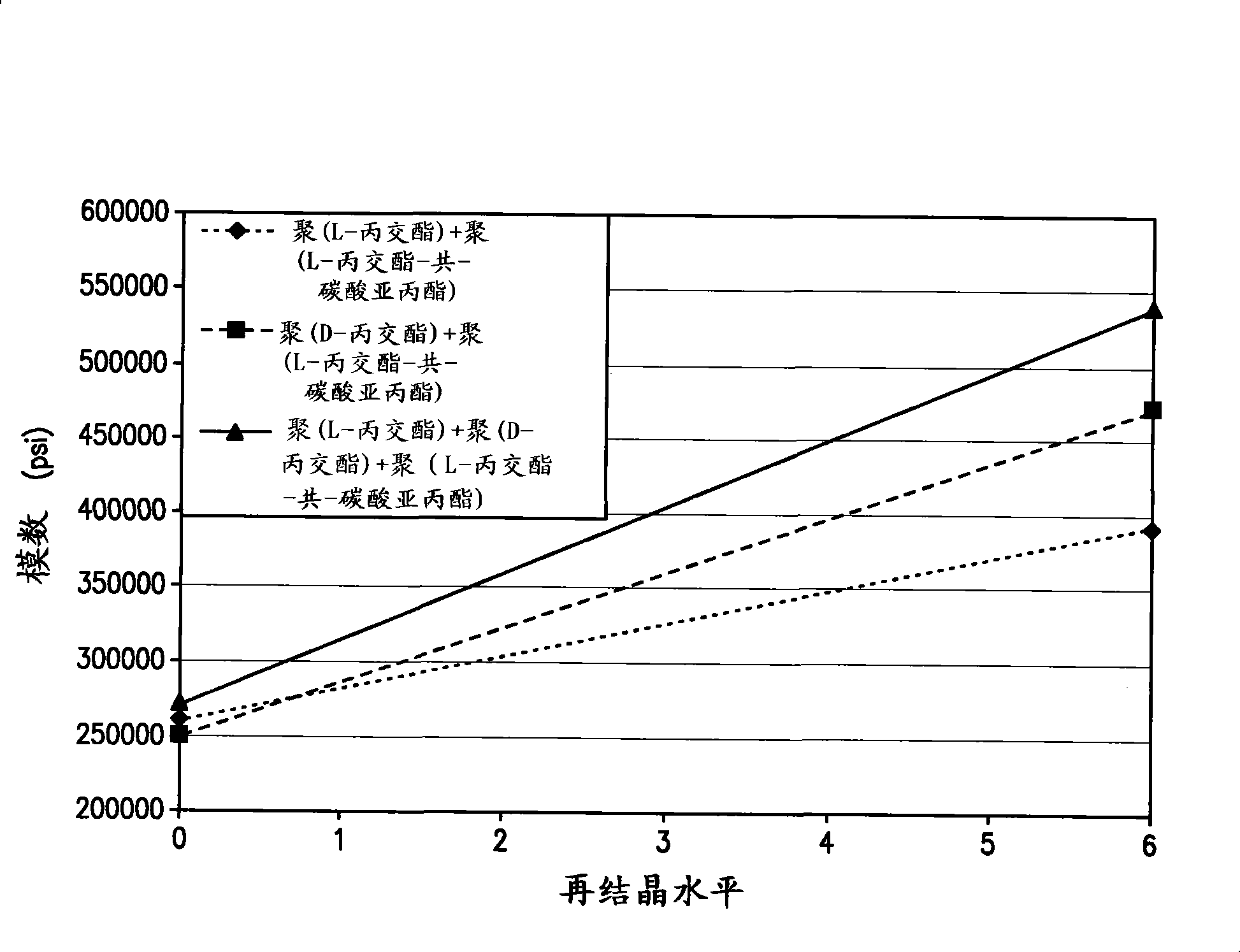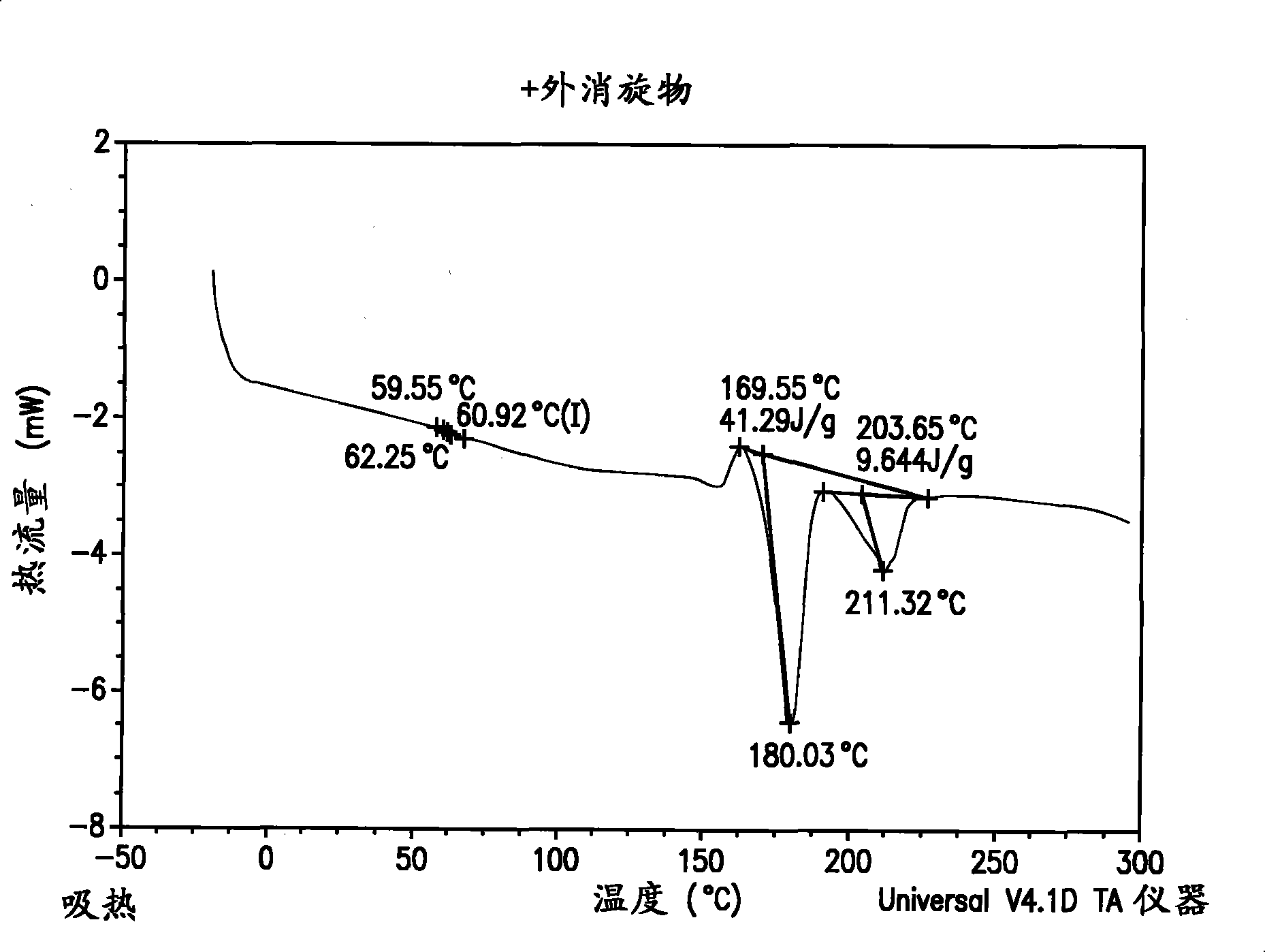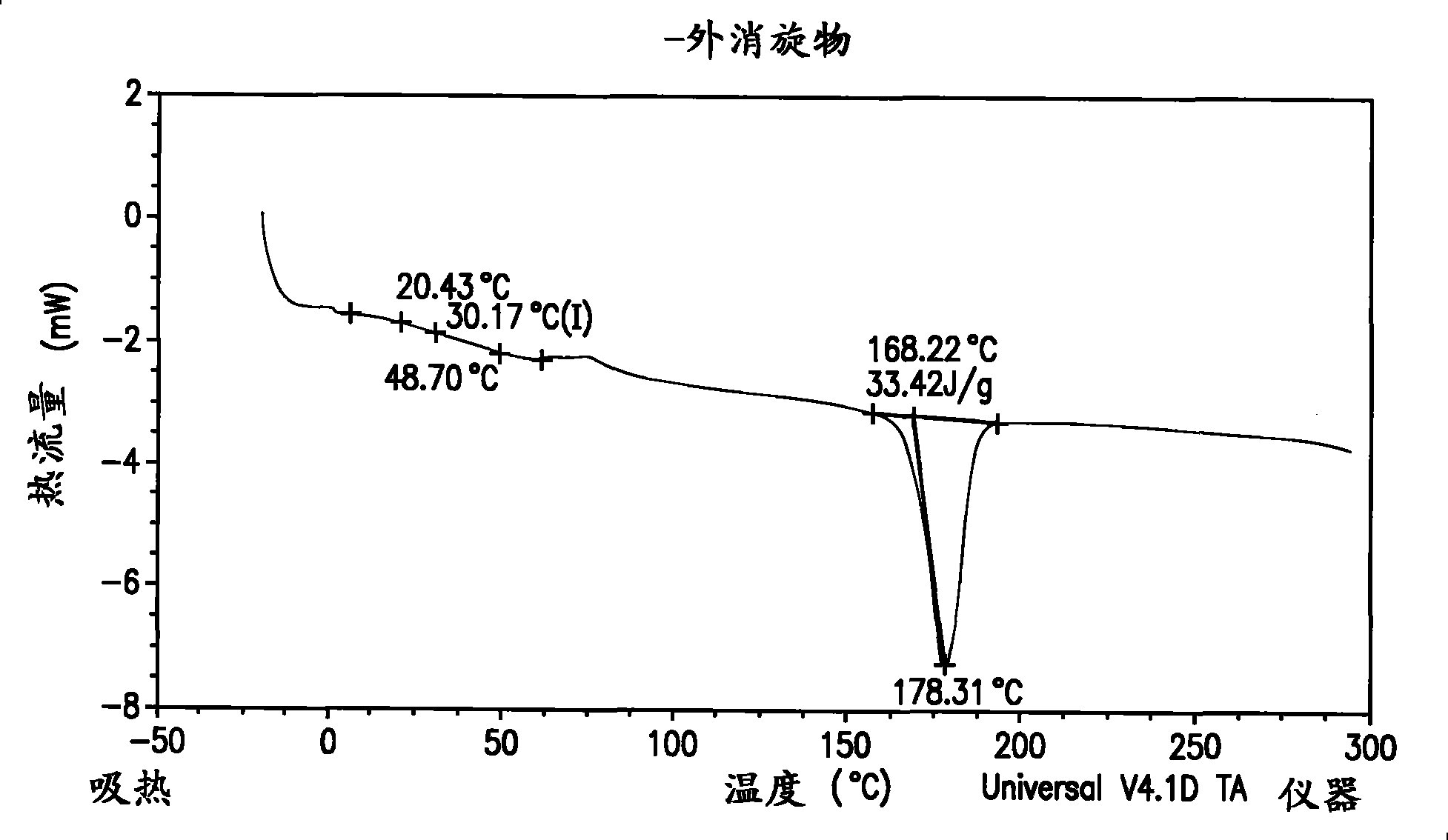Bioabsorbable polymeric composition for a medical device
一种生物吸收、组合物的技术,应用在支架等方向
- Summary
- Abstract
- Description
- Claims
- Application Information
AI Technical Summary
Problems solved by technology
Method used
Image
Examples
Embodiment 1
[0073] One test disc was injection cast from a composition of a racemic mixture of poly(L-lactide) and poly(D-lactide) containing 15% by weight poly( Copolymer modifier of L-lactide-co-TMC). The shot pot temperature was between 110°C and 225°C, and the molding temperature was 50°F to 82°F to cast amorphous discs. The injection pressure was set between 1300 and 1450 psi, and the cycle time was 50 seconds. It was found that a suitable degree of crystallinity could be obtained in this polymer. DSC analysis confirmed the formation of conventional lactide crystal and racemic crystal morphology.
Embodiment 2
[0075] The polymer mixture is blended and extruded into narrow tubes and microscopically cut into stent forms using a laser to create a cage of tortuous struts connected by hoops at one end and / or mid-section of the device Mesh equipment. The resulting stent device includes a primary serpentine strut forming a peripheral mesh structure comprising a second serpentine strut pattern within the stent at or near the end of the stent. The second meandering strut can be fabricated to form a hoop or ring shape that is less sinusoidal or straighter than the first meandering strut in a direction perpendicular to the longitudinal axis of the tubular device when the implant is fully expanded. The expanded second meander strut with smaller or shorter meander hoops or curves is stretched further during expansion. These struts can thus form a hoop with greater crystallinity and thus greater rigidity and elasticity, making the implant resistant to peristaltic changes or displacement.
Embodiment 3
[0077] Polymer compositions can be prepared from commercially available particulate materials and copolymer additives. The dry components were weighed into a container according to the desired weight ratio and the container was subjected to proper rotation for 30 minutes or until a homogeneous mixture was obtained, followed by further drying under vacuum at 60°C for 8-12 hours or overnight. As noted above, the thoroughly mixed components can be melt blended and injection cast into a pair of matching pans. Compositions such that the polymer sheet exhibits suitable elasticity and the appearance of amorphous morphology or very low crystallinity under polarized light sources can be extruded at a melting temperature of 120-160° C. with a post pressure of 40-50 bar, At the same time it was homogenized with a 28-bladed propeller at a speed of 40-80 rpm. Extrusion melt blending and homogenization conditions of the material during the assay phase of the process may include a rotationa...
PUM
 Login to View More
Login to View More Abstract
Description
Claims
Application Information
 Login to View More
Login to View More - R&D
- Intellectual Property
- Life Sciences
- Materials
- Tech Scout
- Unparalleled Data Quality
- Higher Quality Content
- 60% Fewer Hallucinations
Browse by: Latest US Patents, China's latest patents, Technical Efficacy Thesaurus, Application Domain, Technology Topic, Popular Technical Reports.
© 2025 PatSnap. All rights reserved.Legal|Privacy policy|Modern Slavery Act Transparency Statement|Sitemap|About US| Contact US: help@patsnap.com



